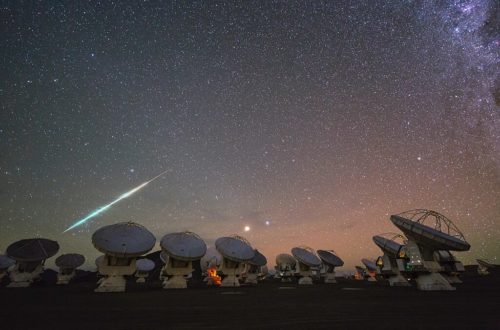Galactic Archaeology: Unveiling the Secrets of the Universe

Embark on a fascinating journey through the cosmos with the emerging field of galactic archaeology. This exciting discipline involves studying the history and evolution of galaxies to uncover the secrets of the universe. By delving into the mysteries of the past, researchers are able to shed light on the present and future of our cosmos. Join us as we explore the wonders of galactic archaeology and the hidden treasures of the universe.
Introduction: Exploring the Mysteries of Our Galaxy
The universe is a vast and complex place, and one of the greatest mysteries lies within our own galaxy. Galactic archaeology is a field of research that seeks to uncover the secrets of our galaxy’s past, and in turn, shed light on the history of the universe.
Like traditional archaeology, this exciting field of astronomy studies the stars and their movements, enabling us to understand how our galaxy has changed over time. By analyzing the chemical and physical properties of stars, scientists can learn about the conditions in which they were formed and the events that shaped their evolution.
Galactic archaeology has the potential to reveal new insights into the origins and development of our universe, and the implications for humanity are profound.
Through understanding the history of our galaxy, we can gain a better understanding of our place in the universe and our role in shaping its future. The journey through galactic archaeology promises to be a thrilling and illuminating one, and we are only just beginning to scratch the surface of what we can learn from this exciting field of research.
What is Galactic Archaeology?
Galactic archaeology is a relatively new field of study that focuses on exploring the history of our Milky Way galaxy. It involves using astronomical data to reconstruct the past events that have shaped the galaxy, such as the formation of stars, the merging of galaxies, and the evolution of black holes.
By studying the chemical and physical properties of stars and other celestial objects, scientists can gain insights into the processes that have occurred throughout the galaxy’s history.
The goal of galactic archaeology is to uncover clues about the origins of our universe and to understand how it has evolved over time.
This field of study is rapidly advancing, thanks in large part to the development of new technologies that allow scientists to gather and analyze vast amounts of data. As our understanding of galactic archaeology grows, so too does our ability to make important discoveries about the universe and our place within it.
How Does it Uncover Clues About Our Universe?
By studying the properties of stars, such as their age, chemical composition, and motion, galactic archaeologists can piece together a timeline of events that have occurred in our galaxy. For example, by analyzing the chemical composition of stars, researchers can determine whether they were formed from the same cloud of gas and dust, which can provide insights into the formation of our galaxy.
Additionally, by studying the motion of stars, researchers can learn about the distribution of mass in our galaxy, which can help us understand the nature of dark matter. Ultimately, galactic archaeology provides us with a new way to explore the mysteries of our universe and unravel its secrets.
The Role of Technology in Advancing Galactic Archaeology Research
Technology has played a crucial role in advancing the field of galactic archaeology research. The use of advanced telescopes, such as the Hubble Space Telescope and the James Webb Space Telescope, has allowed astronomers to observe and study distant galaxies and their evolution over time.
Additionally, the development of spectroscopy has enabled scientists to analyze the chemical composition of stars and galaxies, providing valuable insight into the formation and evolution of the universe.
Moreover, the use of high-performance computing and data analysis tools has made it possible to process and interpret vast amounts of data collected from astronomical observations.
With these technological advancements, galactic archaeologists can now study the universe’s history in unprecedented detail, uncovering clues about the origins of galaxies, stars, and planets. The role of technology in advancing galactic archaeology research is essential, and it will continue to be a driving force in our quest to understand the mysteries of our vast universe.
Benefits and Implications for Humanity Through Understanding Our Universe’s History
By studying the history of galaxies, we can better understand the evolution of our own galaxy, the Milky Way, and the formation of planets and stars. This knowledge can aid in space exploration and potentially lead to the discovery of habitable planets.
Additionally, galactic archaeology can provide insight into the distribution of dark matter and dark energy, which make up the majority of the universe’s composition. Understanding these mysterious components can lead to breakthroughs in physics and potentially revolutionize our understanding of the universe.
Moreover, galactic archaeology research requires advanced technology, which can lead to advancements in fields such as computer science and engineering. As we continue to uncover the secrets of our universe through galactic archaeology, we can expect to see a ripple effect of benefits and implications for humanity.
Conclusion
In short, galactic archaeology is a fascinating field that has the potential to unveil the secrets of the universe. By studying the history of our galaxy, we can gain a better understanding of how it was formed and how it has evolved over time. The use of advanced technology, such as telescopes and computer simulations, has allowed researchers to uncover new clues about our universe’s past.
Through this research, we can also learn more about the origins of life and the potential for other habitable planets in our galaxy. Overall, embracing a new age of discovery through galactic archaeology is crucial for advancing our knowledge of the universe and our place in it. As we continue to explore the mysteries of our galaxy, we can look forward to new breakthroughs and exciting discoveries that will shape our understanding of the cosmos for years to come.
Would you like to receive similar articles by email?





